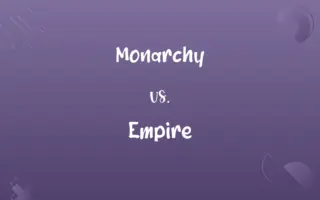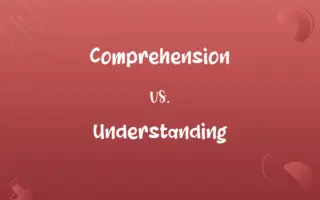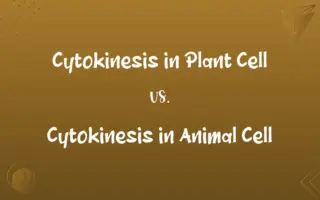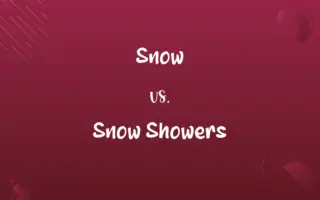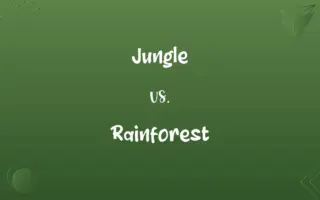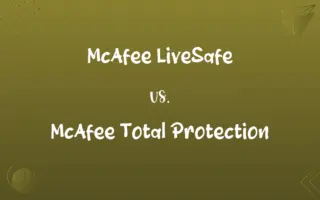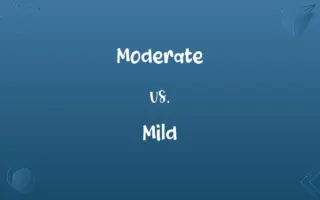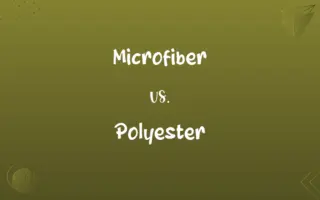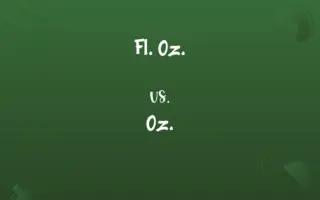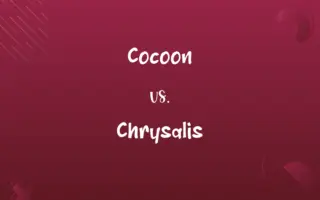Felt vs. Fleece: Know the Difference

By Dua Fatima & Shumaila Saeed || Published on May 25, 2024
Felt is a non-woven fabric made by compressing and matting fibers, while fleece refers to a synthetic material designed to mimic wool's warmth.
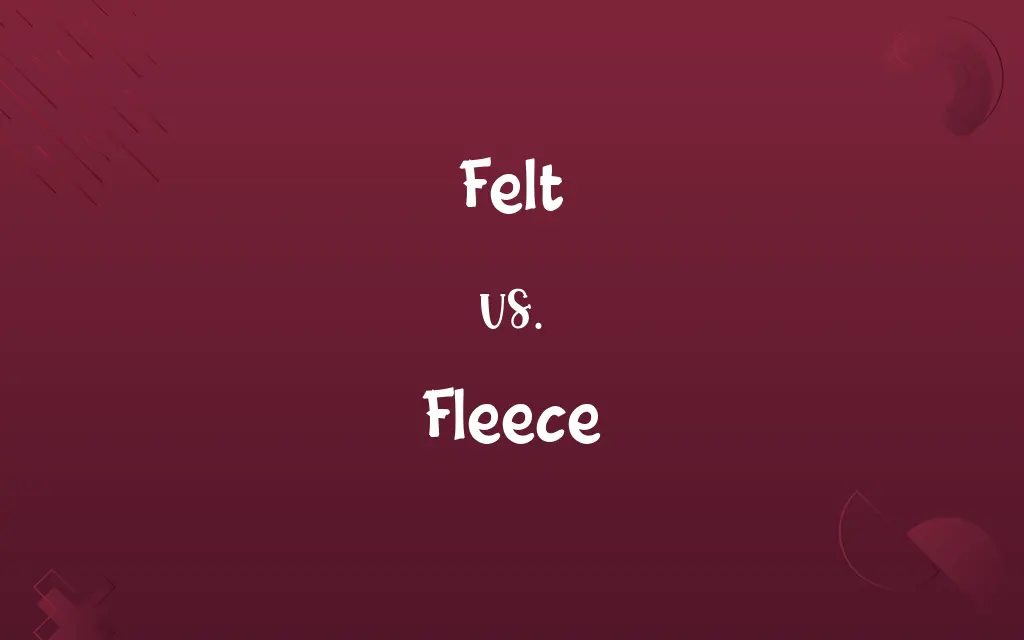
Key Differences
Felt is created through a process that mats, condenses, and presses fibers together, producing a durable, non-woven fabric. It's known for its versatility and is used in various crafts and industrial applications. Fleece, on the other hand, is a soft, lightweight fabric made from synthetic materials, designed to offer warmth without the weight of traditional wool. It's popular in activewear and casual clothing due to its insulation properties.
Dua Fatima
May 25, 2024
While felt is valued for its ability to be shaped and its structural integrity, making it ideal for hats, decorations, and even industrial uses, fleece is prized for its warmth, comfort, and breathability, making it a go-to material for cold-weather gear. Felt can be made from natural fibers like wool or synthetic fibers, which affects its texture and properties. Fleece, however, is primarily made from polyester, giving it a distinct softness and ability to retain heat.
Shumaila Saeed
May 25, 2024
Felt's dense fabric is excellent for crafting because it can be cut without fraying, allowing for intricate designs and durability in finished products. Fleece's lightweight and breathable nature make it perfect for layering in outdoor attire, providing warmth without overheating. The production of felt involves a mechanical process that does not require weaving or knitting, distinguishing it from fleece, which is knitted and then brushed to create its soft texture.
Dua Fatima
May 25, 2024
The environmental impact of both fabrics varies; felt made from natural fibers is biodegradable and sustainable, while synthetic felt and fleece, particularly fleece made from polyester, raise concerns about microplastic shedding and long-term degradation.
Dua Fatima
May 25, 2024
Comparison Chart
Material
Made from compressed and matted fibers, natural or synthetic.
Primarily made from synthetic materials like polyester.
Dua Fatima
May 25, 2024
ADVERTISEMENT
Texture
Dense and durable, can be stiff depending on the fiber used.
Soft, fluffy, and lightweight.
Dua Fatima
May 25, 2024
Production Process
Non-woven, made by matting, condensing, and pressing fibers.
Knitted fabric, brushed to increase volume and softness.
Dua Fatima
May 25, 2024
Uses
Crafts, decorations, industrial applications.
Clothing, especially for cold weather, and blankets.
Dua Fatima
May 25, 2024
Warmth & Breathability
Provides warmth but less breathable than fleece.
Designed for warmth with better breathability.
Dua Fatima
May 25, 2024
Environmental Impact
Biodegradable if made from natural fibers; synthetic versions less so.
Concerns about microplastic shedding from synthetic materials.
Shumaila Saeed
May 25, 2024
ADVERTISEMENT
Felt and Fleece Definitions
Felt
Durable and versatile for crafting and industrial uses.
Felt gaskets are common in automotive applications.
Shumaila Saeed
Mar 05, 2024
Fleece
A synthetic fabric known for its warmth and lightweight.
His fleece jacket kept him warm during the hike.
Dua Fatima
Mar 05, 2024
Felt
A non-woven fabric made by pressing matted fibers together.
The artist used felt to create a colorful tapestry.
Dua Fatima
Mar 05, 2024
Fleece
Made from polyester, designed to mimic wool.
Polyester fleece is a vegan alternative to wool sweaters.
Dua Fatima
Mar 05, 2024
Felt
Ideal for products requiring a stable form.
Decorative felt coasters add a homemade touch to the table.
Dua Fatima
Mar 05, 2024
ADVERTISEMENT
Fleece
Popular in activewear for its breathability.
Her fleece-lined leggings were perfect for winter runs.
Dua Fatima
Mar 05, 2024
Felt
Does not fray when cut, suitable for intricate designs.
She cut detailed shapes out of felt for her project.
Shumaila Saeed
Mar 05, 2024
Fleece
Raises environmental concerns due to microplastic shedding.
Environmentalists recommend washing fleece less often to reduce microplastic release.
Hifza Nasir
Mar 05, 2024
Felt
Can be made from natural or synthetic fibers.
Wool felt is popular for hats due to its firm texture.
Dua Fatima
Mar 05, 2024
Fleece
Soft, fluffy texture ideal for comfortable clothing.
The fleece blanket was her favorite for chilly evenings.
Dua Fatima
Mar 05, 2024
Felt
Change texture so as to become matted and felt-like;
The fabric felted up after several washes
Dua Fatima
Mar 05, 2024
Felt
A cloth or stuff made of matted fibres of wool, or wool and fur, fulled or wrought into a compact substance by rolling and pressure, with lees or size, without spinning or weaving.
Dua Fatima
Mar 05, 2024
Felt
A fabric of matted, compressed animal fibers, such as wool or fur, sometimes mixed with vegetable or synthetic fibers.
Dua Fatima
Mar 05, 2024
Fleece
A soft, warm, lightweight, usually synthetic fabric with a deep pile, used primarily for clothing and blankets.
Dua Fatima
Mar 05, 2024
Fleece
The fine web of cotton or wool removed by the doffing knife from the cylinder of a carding machine.
Dua Fatima
Mar 05, 2024
Repeatedly Asked Queries
Can both felt and fleece be made from synthetic materials?
Yes, both can be synthetic; felt can be made from synthetic fibers, and fleece is primarily made from polyester.
Dua Fatima
May 25, 2024
Which is warmer, felt or fleece?
Fleece is designed specifically for warmth and is generally warmer than felt, especially in cold-weather clothing.
Dua Fatima
May 25, 2024
What's the main difference between felt and fleece?
Felt is a non-woven fabric made by compressing fibers, while fleece is a synthetic, knitted fabric designed for warmth.
Dua Fatima
May 25, 2024
Are felt and fleece environmentally friendly?
Natural fiber felt is biodegradable and more environmentally friendly, while synthetic fleece raises concerns due to microplastic shedding.
Dua Fatima
May 25, 2024
What makes felt unique in crafting?
Its non-fraying edge and ability to hold shapes make felt uniquely suitable for intricate designs and durable crafts.
Dua Fatima
May 25, 2024
How does the environmental impact of felt and fleece compare?
Natural fiber felt has a lower environmental impact compared to synthetic fleece, which contributes to microplastic pollution.
Dua Fatima
May 25, 2024
Can I use felt and fleece interchangeably in crafts?
While they can be used in similar projects, their different textures and properties may make one more suitable than the other depending on the project's needs.
Hifza Nasir
May 25, 2024
Is fleece always made from polyester?
While polyester is the most common material for fleece, it can also include other synthetic fibers for specific textures or properties.
Dua Fatima
May 25, 2024
What are some tips for reducing the environmental impact of using fleece?
Using eco-friendly laundry practices, choosing high-quality, durable fleece, and seeking recycled polyester options can help minimize environmental impact.
Shumaila Saeed
May 25, 2024
Is fleece more suitable for outdoor activities than felt?
Yes, fleece's warmth, lightweight, and breathability make it more suitable for outdoor and active wear.
Dua Fatima
May 25, 2024
How do I care for felt and fleece fabrics?
Felt made from wool requires gentle cleaning to avoid shrinking, while fleece can be machine washed but may release microplastics.
Dua Fatima
May 25, 2024
Can felt be used for clothing?
Yes, felt can be used for clothing like hats and jackets, but it is less common due to its stiffness and less breathability compared to fleece.
Dua Fatima
May 25, 2024
Why is fleece popular in cold-weather gear?
Its lightweight, warmth, and breathability make fleece ideal for layering without adding bulk.
Dua Fatima
May 25, 2024
Does the production of felt involve knitting or weaving?
No, felt production is unique because it does not involve knitting or weaving; it's made by compressing fibers together.
Shumaila Saeed
May 25, 2024
Can synthetic felt be environmentally friendly?
While less sustainable than natural fibers, innovations in recycling processes can reduce the environmental footprint of synthetic felt.
Shumaila Saeed
May 25, 2024
Share this page
Link for your blog / website
HTML
Link to share via messenger
About Author
Written by
Dua FatimaCo-written by
Shumaila SaeedShumaila Saeed, an expert content creator with 6 years of experience, specializes in distilling complex topics into easily digestible comparisons, shining a light on the nuances that both inform and educate readers with clarity and accuracy.
